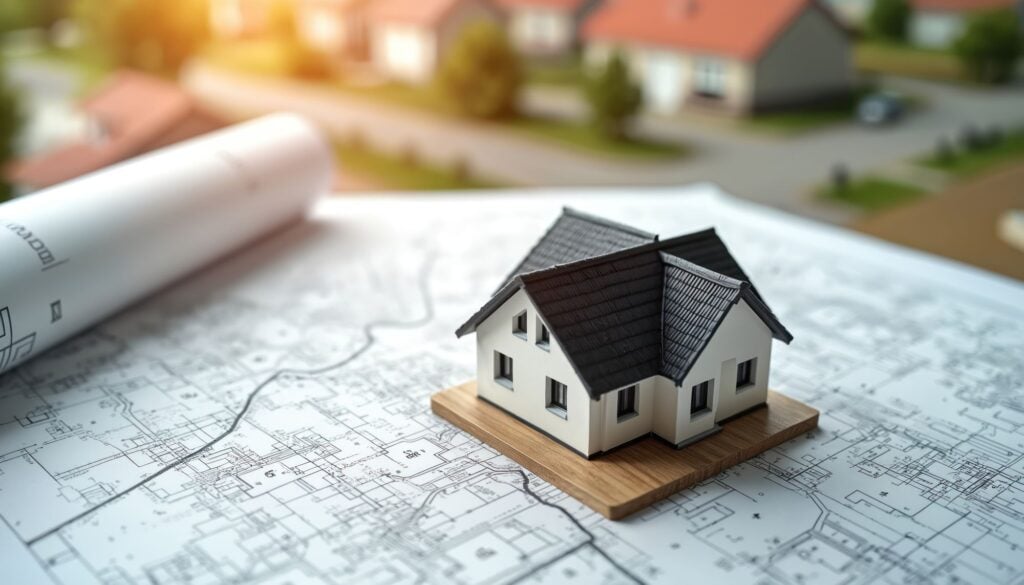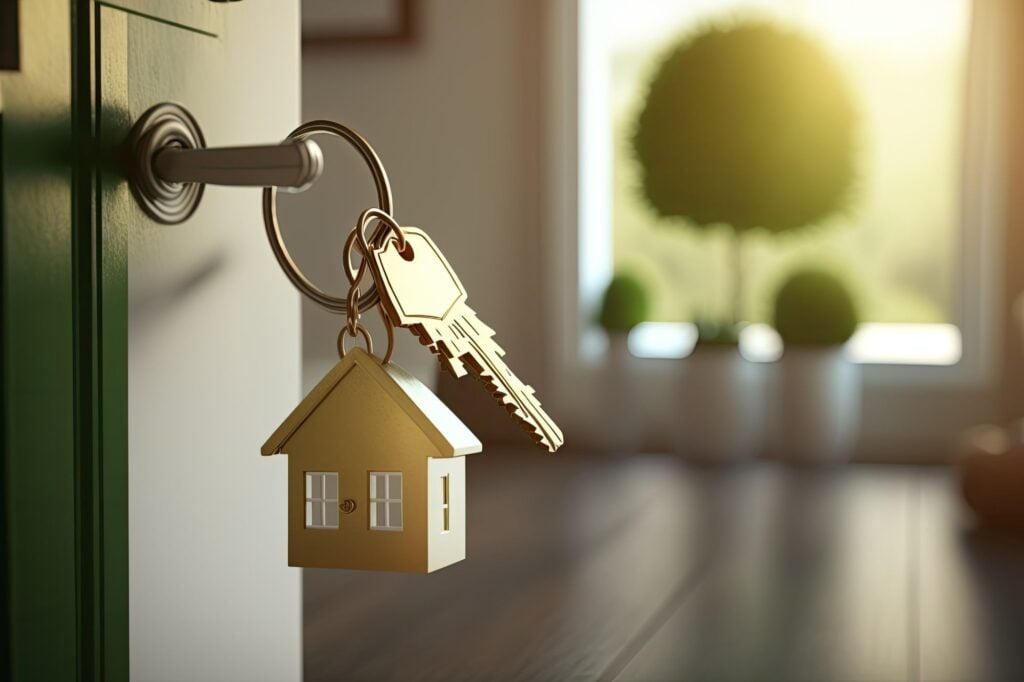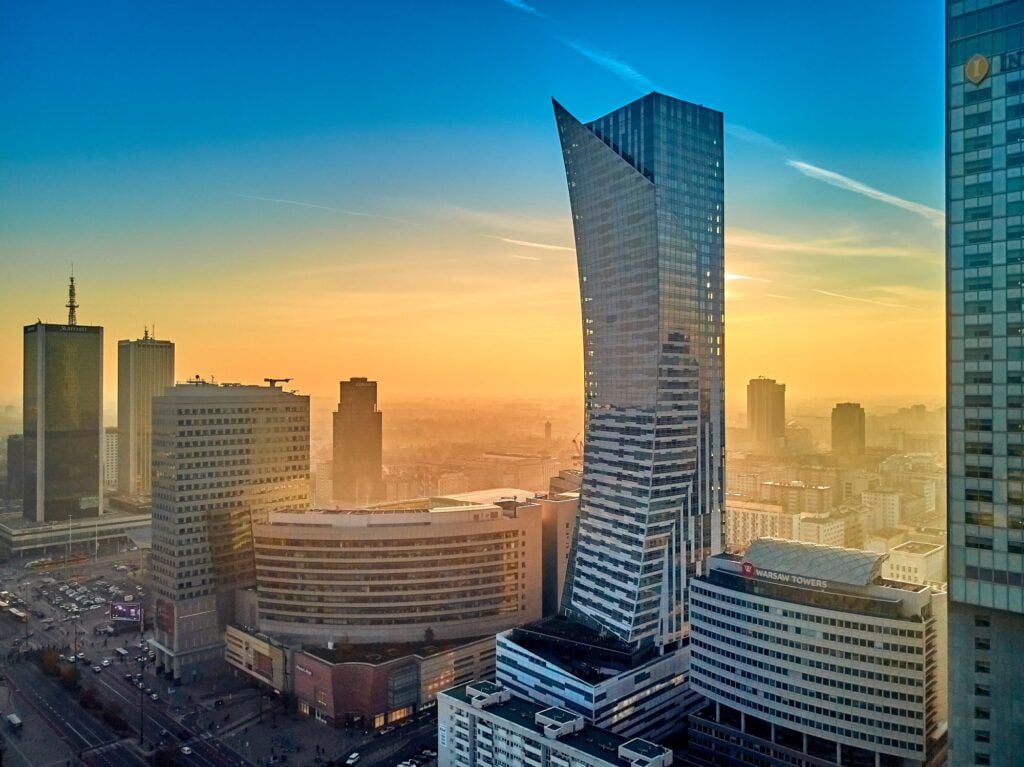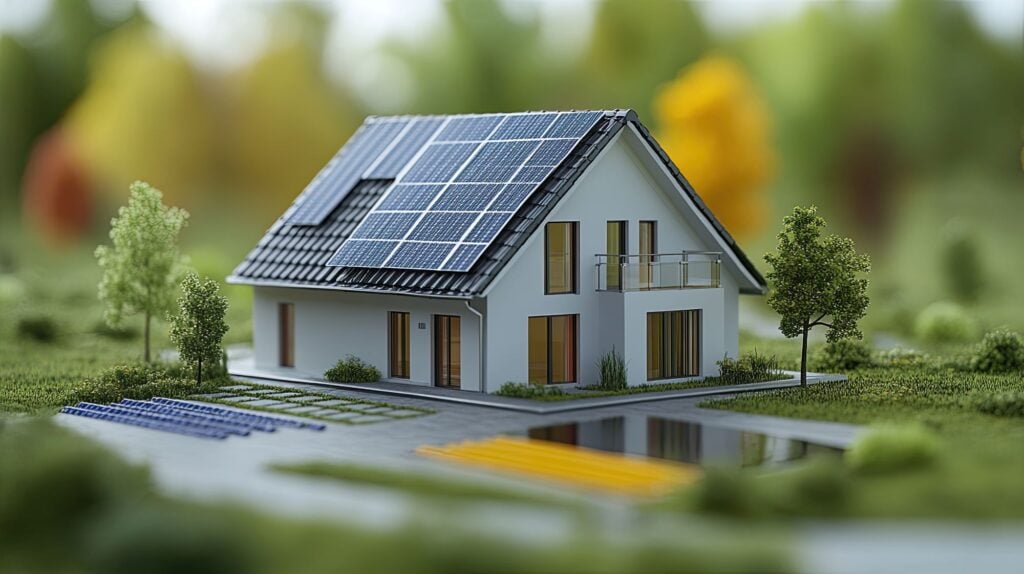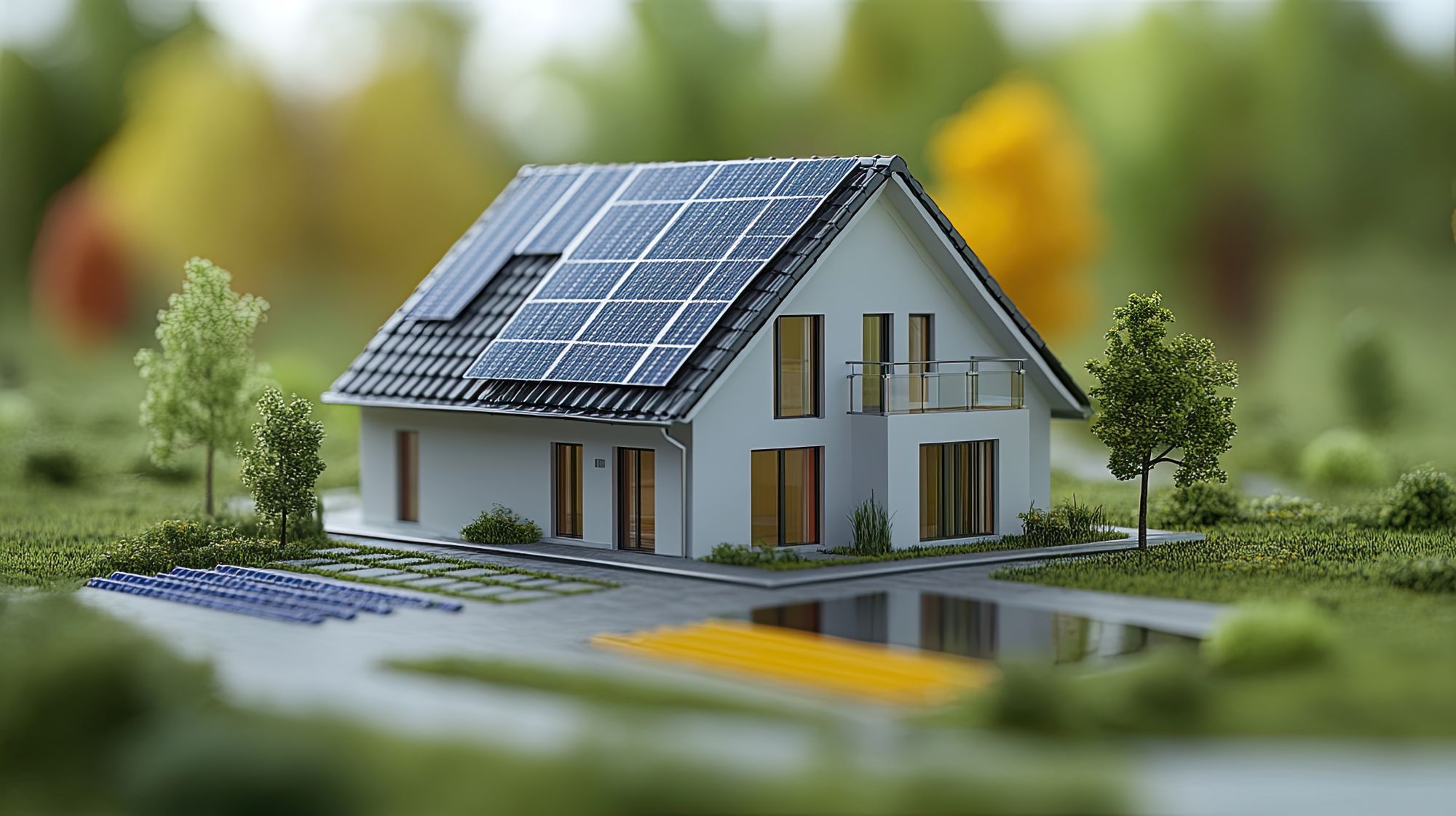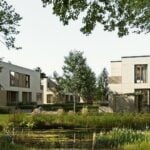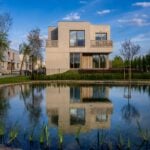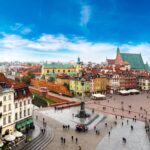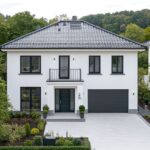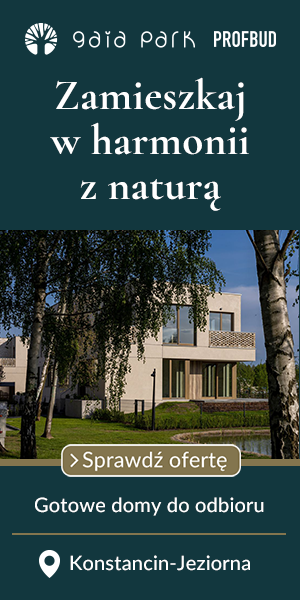Czytaj teraz: [ENG] Life in Warsaw. 10 places you must visit in the city
-
01
[ENG] Life in Warsaw. 10 places you must visit in the city
[ENG] Life in Warsaw. 10 places you must visit in the city
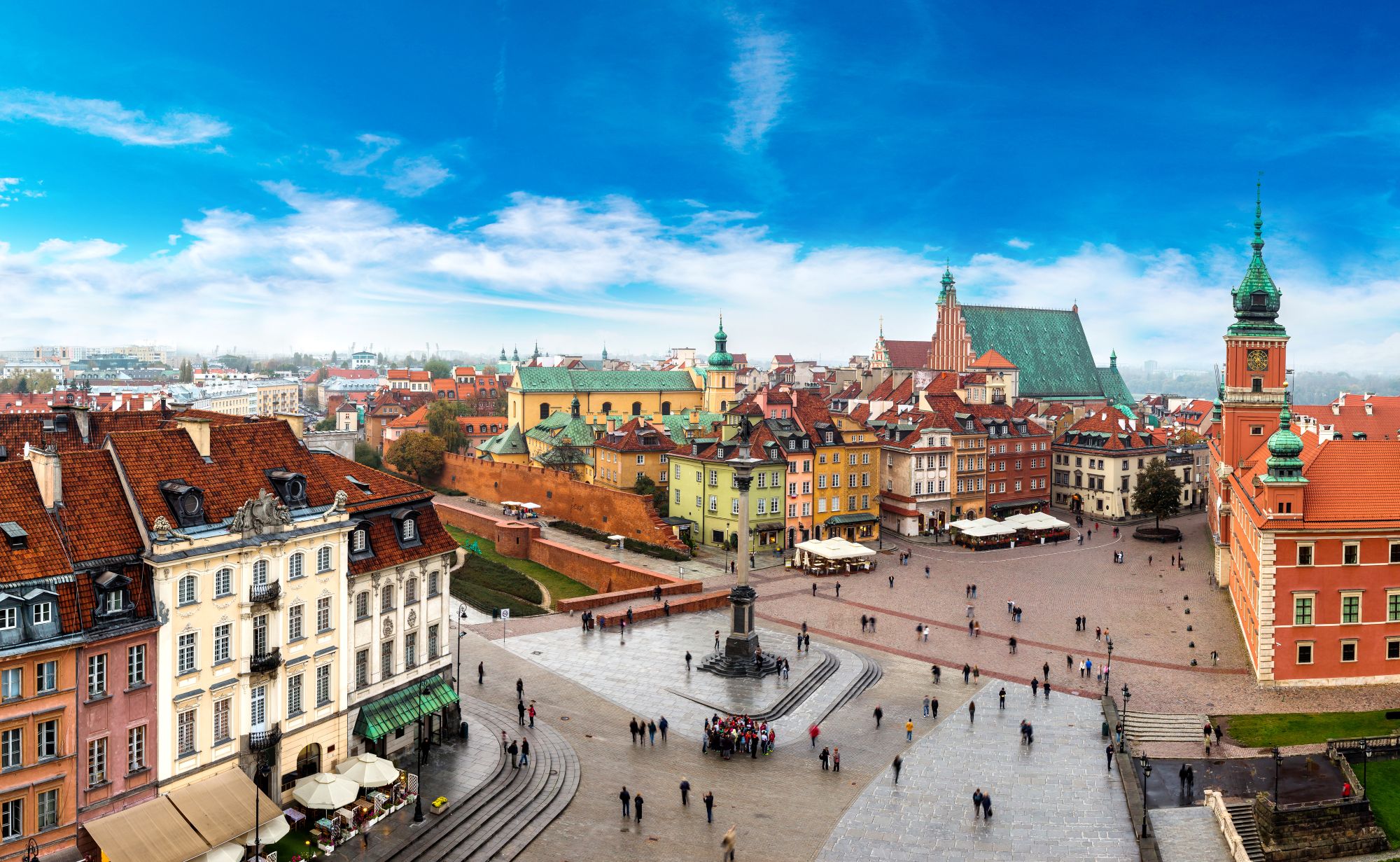
Warsaw is a living organism that daily attracts investors, architects, interior designers, and above all, people looking for their place to live. A city that combines tradition with modernity, history with the future, and a fast pace with a breath of greenery. But before you decide to buy an apartment, build a house, or rent long-term in Warsaw, it’s worth asking yourself a few questions: What does this city really offer? What are the real benefits of living here? In which direction is the capital’s real estate market developing? Remember, deciding to settle in a big city should not be a matter of chance. That’s why we will help you understand what it’s like to live in Warsaw and which places you can’t miss if you truly want to get to know this city. Life in the capital is not just about a prestigious address. It’s a decision about lifestyle, pace, neighborhood, and everyday experiences.
From this text you will learn, among others:
- why Warsaw is a city with an unusual housing history
- whether investing in the capital’s real estate is still profitable
- which places will help you understand the character and lifestyle of Varsovians
A brief history of Warsaw – an unusual city to live in
Looking back, Warsaw practically had no chance to look like it does today—and yet it not only survived but also built its identity almost from scratch. For many, it’s precisely this “unusualness” that makes the capital one of the most intriguing places to live in Poland. Its architecture is often hard to categorize, but it’s probably this contrast that defines its strength—and exceptional investment potential.
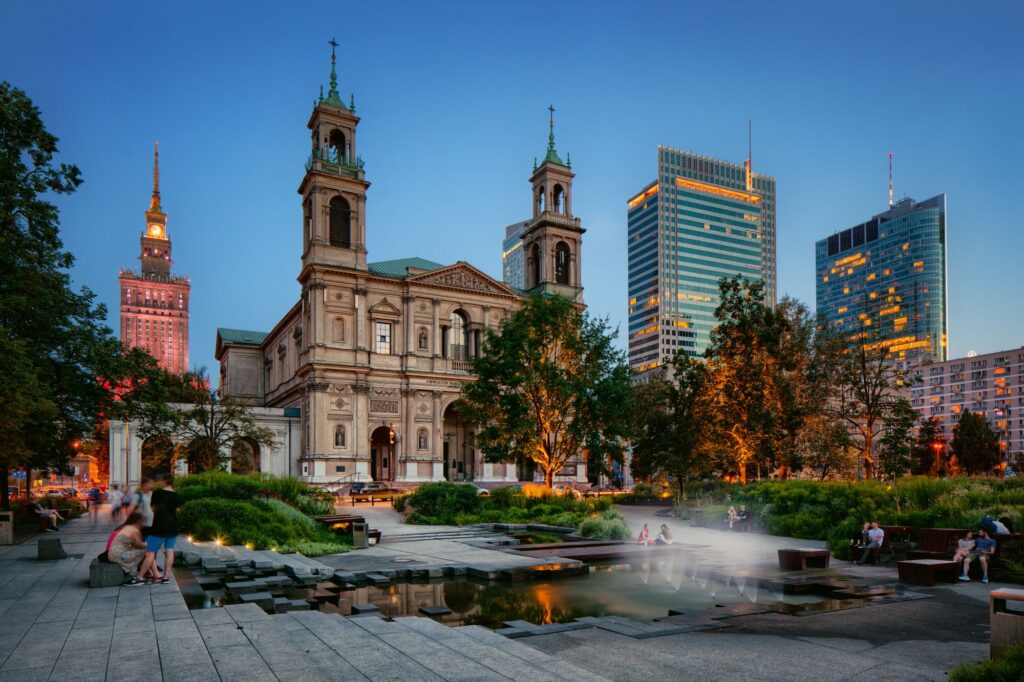
After the destruction of World War II, when over 80% of the buildings were leveled, the city faced a huge challenge: how to create living space anew for hundreds of thousands of people? The answer was both planned reconstructions—such as the Old Town rebuilt based on 18th-century Canaletto drawings—and intensive prefabricated construction that shaped the housing landscape for decades. The result? Warsaw has no homogeneous style, but instead offers a diversity that allows you to match your living space to individual needs.
Today you can choose between a modernist tenement in Mokotów, a loft near the former power plant in Powiśle, or an apartment in a modern building with green roofs in Wilanów. Such a mix is rare among other European capitals, where uniform, conservator-protected districts dominate. In Warsaw, urban eclecticism allows for flexible investing—both in terms of style and price per square meter.
For future residents, this means one thing: Warsaw doesn’t impose schemes. It allows you to create them. And that’s why, despite numerous challenges, it remains one of the most open cities to live—and invest—in Central and Eastern Europe.
Is living in the capital still a good investment?
This is a question many are asking today—both those planning to buy their first apartment and experienced investors looking for a safe way to allocate capital. Warsaw, despite the changing economic situation and dynamic real estate market, remains one of the most attractive investment destinations in Poland.
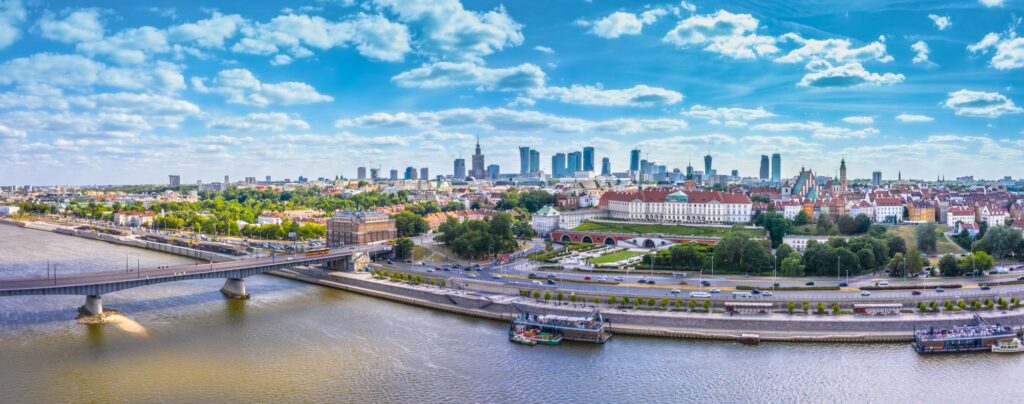
Why?
- First – demand for apartments in Warsaw remains strong.
The capital is not only an administrative center but also an educational, business, and cultural hub. Every year, it attracts thousands of new residents—students, professionals, families with children, and people from abroad. This influx keeps the rental market dynamic, and apartment owners rarely have trouble finding tenants. - Second – the capital offers a wide range of properties.
You can invest in studio apartments for short-term rental, premium apartments in buildings with reception and monitoring, as well as spacious family flats with good access to the center. - Third – property values in Warsaw consistently rise, even despite periodic price fluctuations in the national market.
The capital is resistant to short-term turbulence—mainly due to the limited availability of building plots, infrastructure development (new metro sections, ring roads, tram line modernizations), and a strong services sector that generates high housing demand.
From an investor’s perspective, it’s also worth noting the changes in construction and tax regulations that promote energy efficiency and eco-friendly construction. Investments meeting new standards (e.g., WT2021—technical conditions regarding insulation and energy efficiency) appreciate faster and are more competitive on the secondary market.
10 places you must visit in Warsaw
Wondering if Warsaw is a good place to live? Ask yourself: do you want to live in a city that inspires you every day and also offers space for work, relaxation, and growth? If so—you’re thinking about the right place. Warsaw is not just a real estate market and business bustle. It’s also places that give the city character, make it livable, and often… profitable to invest in. Why? Because being near iconic city landmarks is added value for a property—measurable both financially and in terms of quality of life.
Below you’ll find a subjective list of 10 places worth knowing before you decide to invest. These are spaces that reflect what Warsaw is today. And it’s a city of contrasts and opportunities.
Fabryka Norblina – from industrial heritage to modern lifestyle
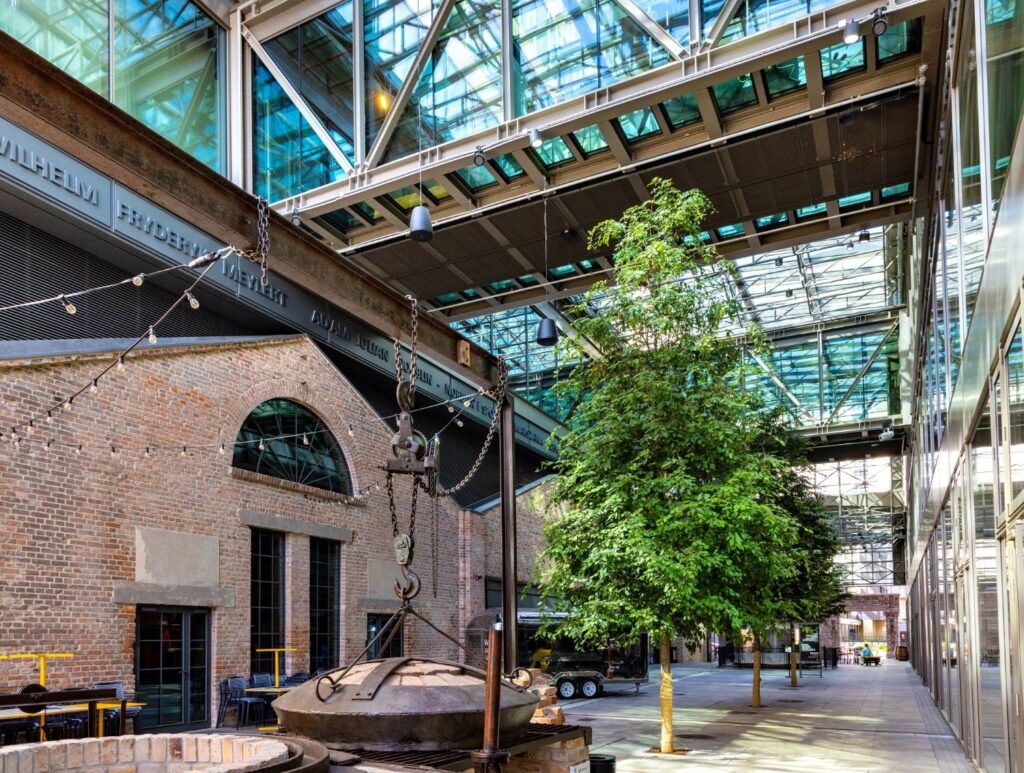
If you’re looking for a place in Warsaw that perfectly combines post-industrial history with modern lifestyle, Fabryka Norblina is a space worth knowing. Located in the heart of Wola, the former Norblin metal factory has undergone an impressive transformation. Today, it’s one of the best-designed multifunctional spaces in the capital. It attracts architects, urban planners, and people looking for properties with potential.
Fabryka Norblina is an example of successful revitalization—instead of demolishing, historical halls were preserved and creatively transformed, introducing modern infrastructure and high-quality design solutions. This is an important urban trend focusing on adapting existing structures. From a construction perspective, it also means a higher standard of execution—investors here focus on durability, aesthetics, and functionality.
On over 65,000 m² you’ll find class A office spaces, a luxury food hall, art galleries, a boutique cinema, a medical center, a Polish design store, and even a museum presenting the history of the metallurgical industry. This place is bustling all day—coworking in the morning, business lunch at noon, cultural events in the evening. Such multifunctionality positively impacts the value of nearby properties.
Thinking about investing in an apartment near Fabryka Norblina? Consider a few facts:
- Location. Proximity to Rondo ONZ, the metro station, trams, and main roads makes this area well-connected to the rest of the city.
- High rental demand. Wola is now both a business and a fast-developing residential district. Both short-term and corporate tenants eagerly choose this location.
- Urban appeal. Modern buildings intermingle with preserved historical elements, giving the area a unique character.
- Service and dining availability. Within a few steps, you have everything—from a laundry to exclusive restaurants and cultural venues.
Fabryka Norblina is not just a place to visit but a real opportunity to invest capital in property that retains its value. For many, it’s also a synonym for lifestyle—modern, urban, yet rooted in history. It’s a space for those who want to be close to the heart of the action while appreciating well-designed living and working environments.
Elektrownia Powiśle – industrial elegance and urban comfort
Elektrownia Powiśle is a space that redefines the concept of urban lifestyle. Located in one of the most dynamically developing parts of Warsaw—Powiśle—it’s also a model example of post-industrial architecture revitalized to meet modern residents’ and investors’ needs. If you’re looking for a location that combines aesthetics with functionality, modernity with respect for history, Elektrownia Powiśle is a place you can’t miss.
For many years, this area was neglected. Today, it’s one of the trendiest spots on the city map—not only from a lifestyle perspective but also an investment one. The former power plant has been transformed into a premium multifunctional complex that attracts people seeking unique experiences—from culinary to shopping. It offers office spaces, concept stores, designer boutiques, a food hall with international cuisine, a wellness zone, and even a barbershop and aesthetic medicine services. But it’s not just about style—it’s also about specific location benefits.
From an investor’s or buyer’s perspective, it’s worth noting several key aspects:
- Premium location. Elektrownia is just a few minutes’ walk from the Copernicus Science Center, Vistula boulevards, and a metro station. It’s a location combining the calm of Powiśle with the lively atmosphere of downtown.
- Investment potential. Powiśle has been attracting buyers seeking premium properties for several years—both for living and rental. Price stability, low risk of depreciation, and high demand make this area a solid capital investment.
- High-quality development. New residential projects near Elektrownia feature modern architecture, high-end finishes, and attention to urban details—from greenery to lighting and pedestrian pathways.
- Cultural and educational surroundings. Nearby you’ll find renowned universities, cultural institutions, and art galleries. This attracts professionals and creative freelancers—the target group for long-term high-profile rentals.
- Access to services in a “15-minute city” model. The entire concept of Elektrownia is based on the idea that everything you need—gym, healthy food, even workplace—is within walking distance. This urban planning model is now becoming standard in sustainable urban neighborhoods.
It’s also worth noting the aesthetics of the space. The industrial walls of Elektrownia have been balanced with glass, greenery, and architectural details, creating a unique atmosphere. This attracts not only residents but also renowned brands and top-tier dining, further boosting the location’s prestige.
Tree-top footbridge around the Warsaw Uprising Mound – a green perspective on city life
Warsaw is increasingly changing its urban landscape, shifting its focus from concrete and glass toward sustainable development, microclimate, and green areas. A good example of this is the tree-top footbridge running around the Warsaw Uprising Mound in Czerniaków. This investment clearly shows that the capital can design space in both symbolic and practical ways.
The footbridge not only lets you walk among the leaves and branches above ground, but it also fits into a modern approach to urban landscapes. It was created as part of the revitalization of the areas around the Mound—a place important from both a historical and emotional perspective, and at the same time one of Warsaw’s highest viewpoints. This proves that investing in green spaces does not mean giving up social functions or aesthetics.
Why is it worth paying attention to this part of Mokotów?
- Greenery within walking distance. The footbridge leads through the park and lets you immerse yourself in nature without leaving the city. For people planning to settle in Warsaw with their families, the proximity of such recreational areas is a huge added value.
- The growing importance of green areas in housing investments. From a real estate market perspective, the vicinity of revitalized natural spaces increases the value of land and apartments. Investors and developers know that access to greenery is now one of the key factors determining location attractiveness—especially in the premium segment.
- Ecological approach to urban space design. The footbridge was designed to minimally interfere with the natural ecosystem—instead of cutting down trees, the focus was on integrating the infrastructure with the existing stand of trees. This is a sign that Warsaw increasingly emphasizes so-called green infrastructure, which bodes well for the future.
If you want to live in a place that lets you escape the city noise every day and still stay at the center of events—a walk in the tree tops around the Mound may inspire you to take a closer look at this part of the city.
Pole Mokotowskie in a new version – a green investment in quality of life
Pole Mokotowskie is one of the largest and best-known green areas in Warsaw, but also one of the places that has undergone an impressive transformation. Thanks to a recently completed modernization, the park has not only gained a new quality of space but also real added value for residents and investors.
The revitalized park is no longer just a place for a walk with the dog or a morning jog. Today, it’s a thoughtfully designed urban space that combines ecological planning with functionality. The modernization project covered over 70 hectares, introducing sustainable solutions in small-scale water retention, irrigation systems, local biodiversity, as well as park architecture adapted to the needs of different user groups—families, seniors, remote workers, and sports enthusiasts.
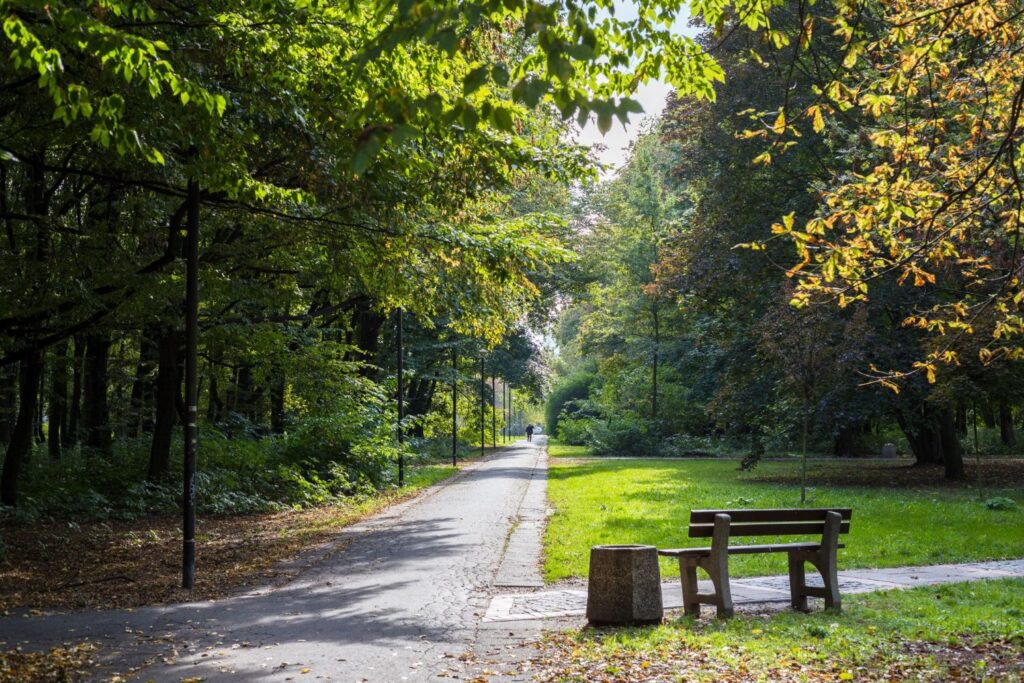
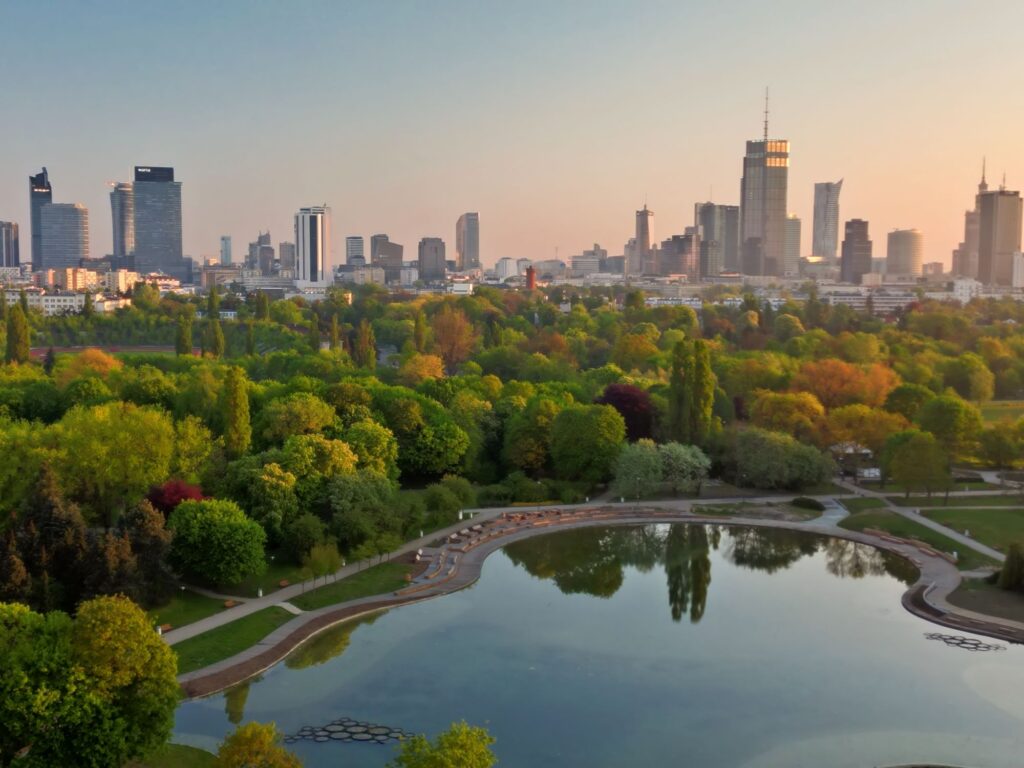
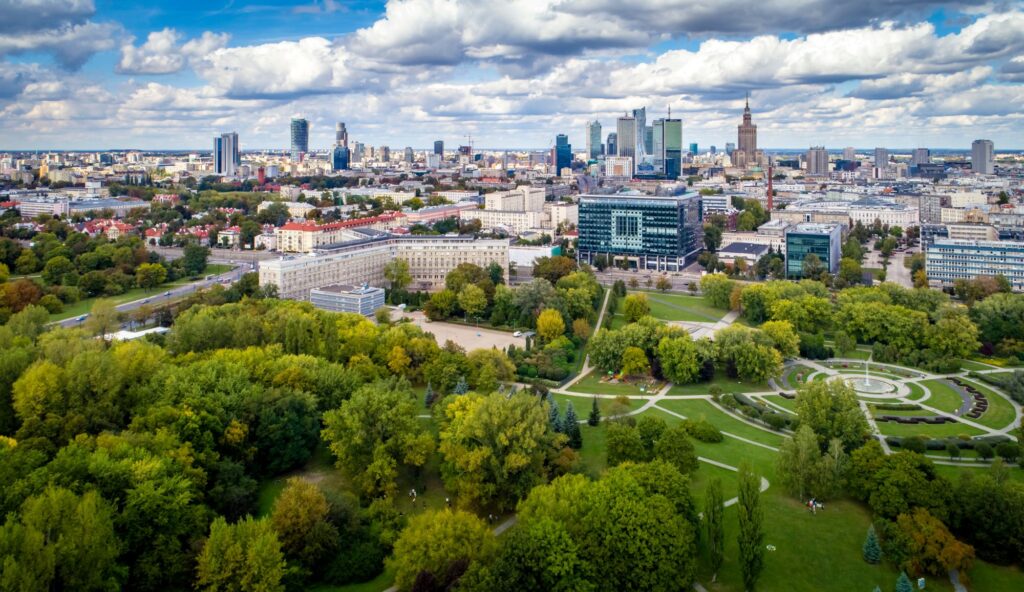
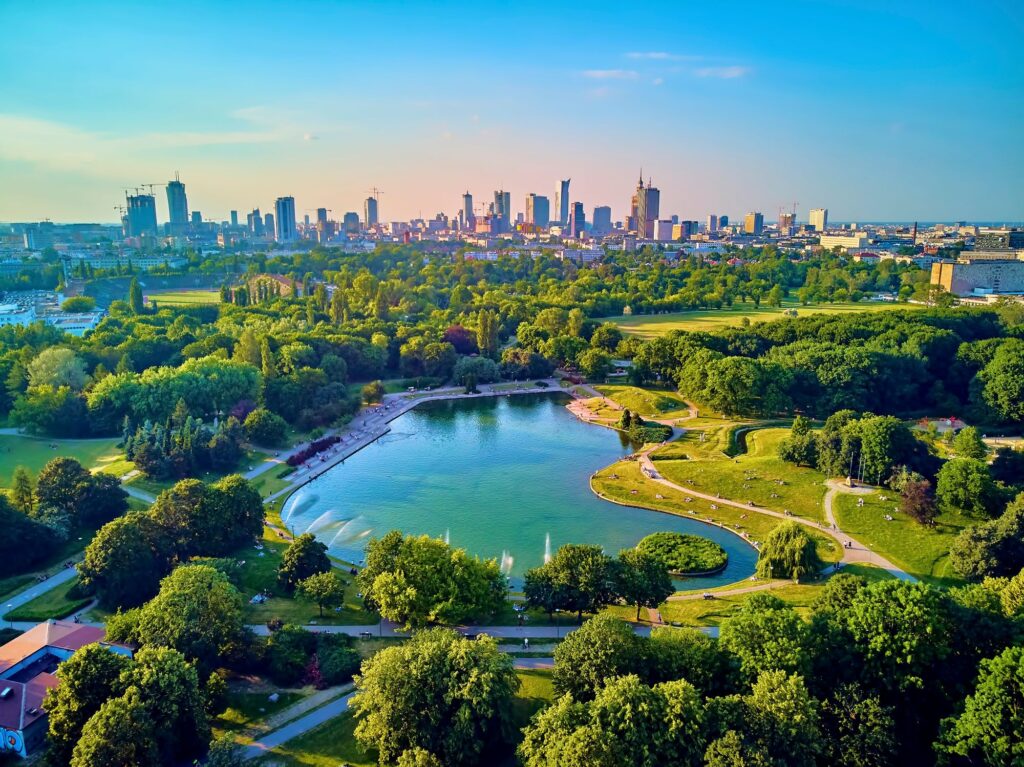
Why invest near Pole Mokotowskie?
- High quality of life in the city center. Apartments near Pole Mokotowskie enjoy stable demand and above-average price levels. Districts such as Stary Mokotów or Filtry are gaining importance, offering excellent access to the center but also peace, greenery, and good social infrastructure.
- Attractiveness for premium tenants. Proximity to the revitalized park is a big advantage for long-term rentals—especially in the premium segment. This is a space valued by expats, IT specialists, and senior managers.
- Rising land and property values. Revitalization of green areas almost always leads to increases in local real estate prices. Pole Mokotowskie is no exception—it’s already seeing a dynamic rise in interest, both in ready apartments and in projects under construction.
- Modern ecological infrastructure. This includes rain gardens, water retention ponds with educational functions, and natural flower meadows supporting urban biodiversity. These solutions not only increase the attractiveness of the area but also reflect a shift in thinking about urban space—from concrete toward regeneration.
- Access to services and transportation. The park is at the junction of three districts: Mokotów, Śródmieście, and Ochota. This makes the area very well-connected—with the city center and with Chopin Airport. Proximity to metro lines, trams, and numerous bike paths is another advantage for residents.
Pole Mokotowskie is a living urban organism that’s becoming the heart of a new lifestyle—conscious, healthy, and well-designed. Here, greenery is not an addition—it’s the main actor on the urban stage. And in the long term, that means not only everyday comfort but also investment stability.
Vistula boulevards and Żoliborz beach – life by the water in the rhythm of the city
The Vistula River is increasingly entering the consciousness of Varsovians as a real part of the city’s identity—not just as a landscape element, but also as an active social, cultural, and recreational space. For decades seen as a barrier, today it’s becoming an axis around which new urban life develops.
The renovated Vistula boulevards on the left bank of the river and the wild, more natural beaches on the right bank create a unique mix of two worlds. This is a space where landscape architecture, urban planning, and residents’ needs have met in one project. The boulevards impress with thoughtful infrastructure—bike paths, sun decks, small architecture, cafés, and kayak piers—while encouraging spending time in ways that don’t require big expenses.
Why is a location by the Vistula increasingly a strategic point for investors?
- Riverside revitalization = increased property value. Areas near the Vistula—both in Powiśle and Żoliborz—have significantly gained investment attractiveness in recent years. Developers, aware of rising demand, increasingly choose locations near green and water areas, knowing they are now synonymous with quality of life.
- Żoliborz beach. Known for its intimate atmosphere and natural character, the Żoliborz beach attracts not only local residents but also people seeking an alternative to the popular spots on the left bank. The view of the Warsaw skyline from this perspective can surprise—not just at sunrise.
- Proximity to Powiśle and Muranów. The boulevards form a natural connector between Śródmieście, Powiśle, Muranów, and Żoliborz. Thanks to this, apartments in this part of the city offer a unique combination of peace and access to the capital’s main commercial and business hubs.
- New social and dining functions. A walk along the boulevards today is not just recreation but also access to a developing gastronomic infrastructure—from trendy food trucks to seasonal restaurants with river views. Places like Grunt i Woda, Sen Nocy Letniej, or Barka Warszawska attract not only residents but also tourists, boosting the local economy.

Contrary to appearances, the Vistula doesn’t divide Warsaw—it unites it. And although the river climate can change like mountain weather, one thing is certain: investing in space near the water is investing in quality of life. And after all, that’s what matters most, right?
Warsaw’s cultural life, or theaters to choose from – art as daily life and capital
Warsaw is rightly considered the capital of Polish theater life. Whether you’re a fan of classics, appreciate avant-garde forms of expression, or are simply looking for inspiration after work—the capital’s theater scene can engage and surprise.
Theaters in Warsaw are evenly distributed across different districts—from Śródmieście to Praga and Mokotów. They support local social life, increase the value of neighboring properties, and attract people seeking broad “urban culture.” By buying an apartment near a lively artistic hub, you invest in a location that will never lose value—on the contrary, it gains in the eyes of those who treat the city as a space for living, not just working.
Where to seek theatrical emotions?
- Teatr Narodowy and Teatr Wielki – Opera Narodowa
Located in the very center, at Teatralny Square, these institutions symbolize prestige and timelessness. Their repertoires include classic dramas, operas, and ballets of the highest caliber. For an investor, it’s a clear signal—real estate in this area will always have stable value, though availability is limited. - Nowy Teatr in Mokotów
Created, among others, by Krzysztof Warlikowski, it’s one of the most important contemporary cultural centers in Poland. Located off the tourist trails but near main communication arteries. New housing investments are springing up nearby, attracting people working in creative industries. This is a great example of synergy between culture and modern construction. - Teatr Powszechny – Praga Południe
A space for socially engaged, experimental, and bold art. The revitalization of Praga means that properties in this part of the city are gaining a new identity. Apartments near Zamoyskiego or Mińska streets are today an increasingly common choice for people seeking more than just a comfortable flat—they want to be part of a changing Warsaw. - Och-Teatr and Teatr Polonia – Ochota and southern Śródmieście
Krystyna Janda’s project shows how theater can connect generations and lifestyles. Located in friendly, local districts, they are a model of integrating cultural functions with everyday urban life. Living in this area is an investment in a neighborhood alive throughout the week—not just from Friday to Sunday. - Teatr Studio and TR Warszawa – Plac Defilad
Śródmieście, especially the area around the Palace of Culture, is not only Warsaw’s geographic but also cultural center. Teatr Studio and TR Warszawa attract audiences open to modern forms of communication and dialogue with reality. For investors, it’s another argument for choosing a location near the city’s cultural hubs.

Access to culture in the immediate vicinity increases not only the attractiveness of a district but also its resilience to market fluctuations. So when considering an investment, don’t just ask about square footage and number of rooms. Think about whether you can see a good play nearby. Because where there’s a theater, there’s a thinking community. And where people want to live and create—that’s where it’s worth investing.
Saska Kępa scented with lilac – an enclave of peace in the rhythm of the city
If you’re looking in Warsaw for a place that combines pre-war charm with modern living comfort, Saska Kępa is a district you definitely need to explore—both from the perspective of a future resident and an investor. It’s not a spectacular space at first glance. You won’t find skyscrapers or shopping malls the size of airports here. But you will find something much more enduring—intimacy, architecture with soul, and a neighborhood character that’s rare in large cities.
In May, the streets of Saska Kępa smell of lilac—literally. But this fragrant metaphor is more than just a poetic description—it’s a real signal that the district lives at its own pace, independent of the city bustle. It’s also one of the few parts of the capital where a walk among modernist villas from the 1920s and 1930s can become a daily ritual.
Why is it worth living—or investing—here?
- Well-preserved urban layout and low-rise buildings. Saska Kępa has successfully resisted gentrification temptations. The district has retained its historic street layout, the balance between greenery and buildings, and its villa-residential character. New residential projects here are carried out with great respect for the existing urban fabric. This means low supply—but also high price stability.
- Francuska Street – the backbone of local life. This is where the district’s life is concentrated—from elegant pastry shops to small cafés and restaurants with European and local roots. For residents, it’s more than just a dining offer—it’s a daily ritual. And for investors—a sign that the area has a strong service base and a loyal community.
- Proximity to the Vistula and Skaryszewski Park. Within walking distance is one of Warsaw’s most beautiful parks—Skaryszewski. That’s 58 hectares of greenery, ponds, alleys, and places for active recreation. Add access to bike paths and the Vistula, and you get a location that supports a sustainable lifestyle—without needing to escape the city.
- Interior design inspired by Saska Kępa’s atmosphere. Apartments in this area are often finished in mid-century modern style, with accents of modernism and natural materials: wood, stone, fabrics. It’s a style that resists trends—just like the district itself. Long-term thinking investors know that timelessness is a currency that doesn’t lose value.
- Social capital. What’s not immediately visible but has huge importance when buying property is neighborhood stability. Saska Kępa is home to artists, journalists, architects, and freelancers. They create a local community that invests in the space they live in—and not only financially.
Saska Kępa proves that you can live in a big city without constantly feeling rushed. You can live in the center without giving up privacy and greenery. You can invest guided by something more than charts—intuition, aesthetics, the history of a place.
Old Town and Royal Castle – the historic heart of the city with modern potential
The Old Town, Warsaw’s Stare Miasto, is a place where history breathes with every step. Although almost entirely rebuilt after the destruction of World War II, it hasn’t lost its authentic spirit. Today, it’s not only a symbol of resilience and the will to rebuild the city, but also one of the most recognizable locations in Poland. For residents, it’s a space for meetings, walks, and culture. For investors—an address that will always hold value, regardless of market fluctuations.
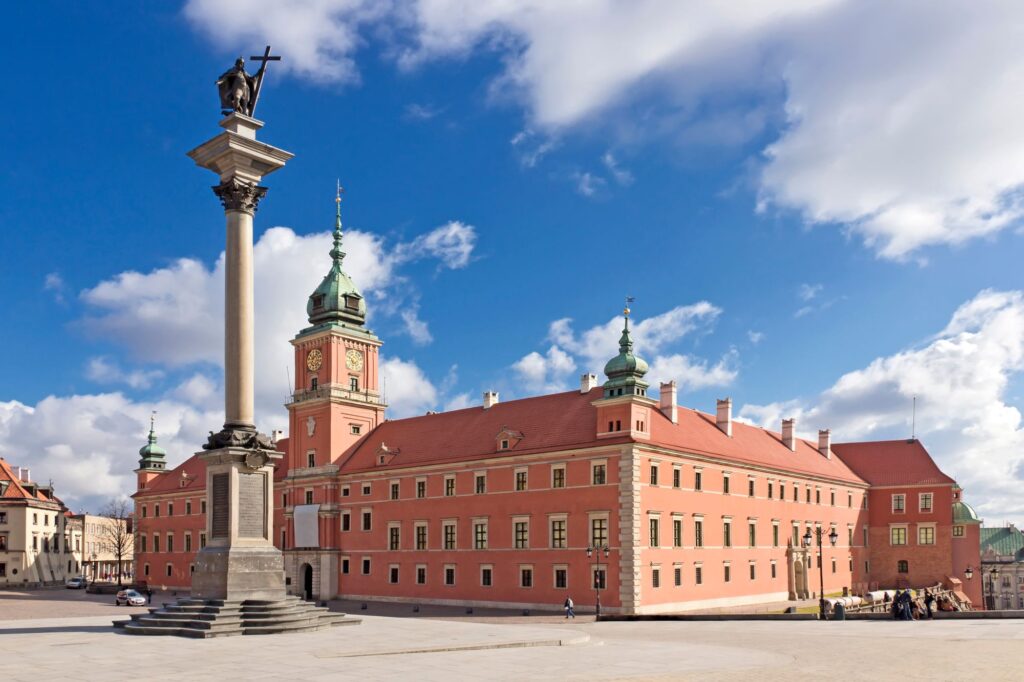
The Royal Castle, which crowns Castle Square, serves as a museum, but its presence in the city’s landscape is more than just an art exhibition. It’s proof that Warsaw can combine monumental heritage with the functionality of a modern metropolis. Nearby are prestigious apartment buildings, carefully revitalized tenements, and properties with soul that can be an interesting alternative to new construction.
What should you know before deciding to live or invest here?
- Premium properties with historical background. Units around the Old Town and the Royal Route belong to the so-called class A market—often historic, with limited availability but stable value. These are not apartments for everyone—they are a choice for those who value prestigious locations and are looking for assets resistant to inflation.
- Tourism and quality of life. The Old Town bustles all year. Restaurants, galleries, cafés, and outdoor events attract tourists but also improve residents’ quality of life. However, it’s worth knowing that the district’s seasonal activity can affect daily logistics. For some, that’s a drawback; for others, it’s proof they live at the center of events.
- Greenery and access to recreation. Although it may seem that the historic center is all stone and brick, in fact, there are plenty of green spaces nearby. Krasiński Garden, Hoover Square, and the Multimedia Fountain Park all offer post-work or weekend relaxation. For active people, the proximity of the Vistula boulevards with their walking and cycling routes also matters.
- Revitalization and new urban functions. Warsaw’s Old Town isn’t standing still. The city is gradually renewing pavements, improving technical infrastructure, and introducing new functions—offices, dining, culture. Thanks to this, even older buildings are getting a second life, and investments nearby stay current.
- Interior style – classic with a historical accent. Apartments in this part of the city are often decorated in timeless elegance. High ceilings, wooden floors, original window joinery prevail. Increasingly, these interiors are combined with modern technological solutions—smart home systems, underfloor heating, or acoustic insulation allow you to keep the spirit of old Warsaw without giving up comfort.
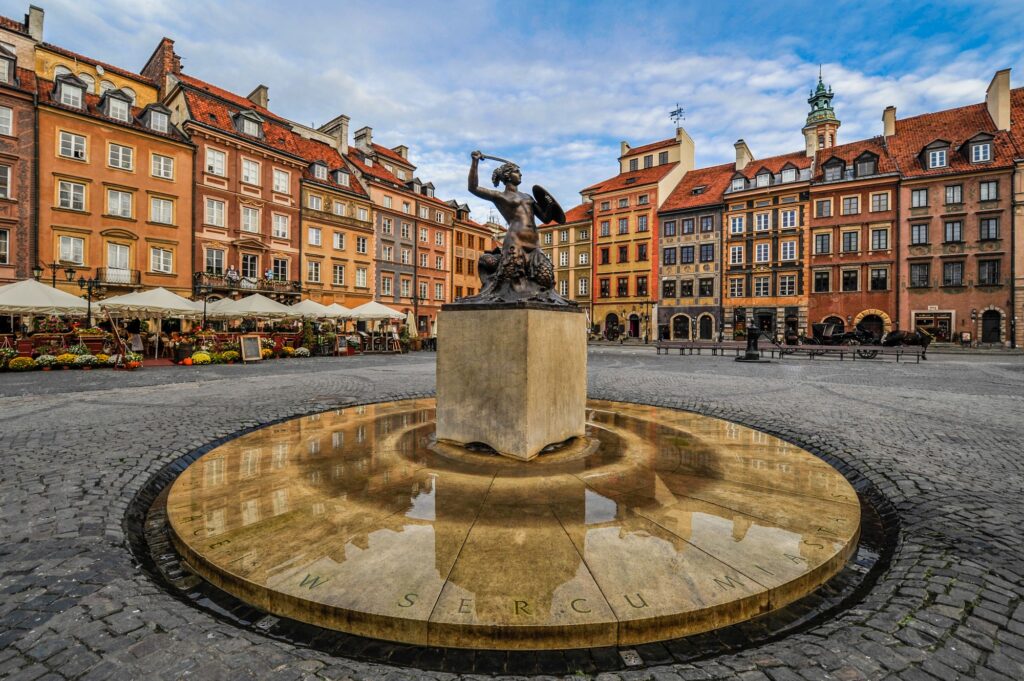
The Old Town and Royal Castle are not only must-see points on the tourist map. They are the city’s heart, beating continuously for centuries—with interruptions that only prove its strength. If you’re looking for a place that combines historical value with investment potential, you can find something here that doesn’t age with the market. Because as history shows—the Old Town always returns to favor.
Wrzenie Świata café – a space of words, reflection, and city rhythm
On the map of Warsaw, there are many places that attract with design, views, or menu. There are plenty of cafés or restaurants with loyal fans. But Wrzenie Świata draws people in with something much more lasting—an intellectual atmosphere, authenticity, and an unpretentious vibe. It’s not just a café, but also a micro-center of literary and journalistic life. Located just off Nowy Świat, in a courtyard on Gałczyńskiego Street—away from the main traffic, yet in the heart of the city. If you plan to live in Warsaw, it’s worth knowing where you can not only have coffee but also think.
Wrzenie Świata is a space created by the Institute of Reportage Foundation. For years, it has attracted people connected to culture, art, and media—but also those simply looking for a place with a good book and good espresso. It’s a spot that doesn’t aim for mass appeal. It doesn’t compete with décor or social media reach. And precisely because of that, it has become a reference point for those who value quality over effect.
Why is it worth visiting—and coming back?
- A café with a mission. Wrzenie Świata is a rare example of a place where gastronomy connects with education and culture. Alongside coffee, you can buy reportage books, attend author meetings, writing workshops, and debates. It’s a space of creative exchange that grows from the spirit of the city—and its intellect.
- A location without flash but with potential. For future residents and investors, this is an important signal: the most interesting places in Warsaw are often hidden in second-row buildings, in restored tenements or post-industrial spaces. This is where urban micro-communities and trends that later matter on a larger scale are born.
- A place for work and meetings. During the day, Wrzenie also serves as a coworking space. It’s a popular remote work spot for freelancers, journalists, and students. The lack of intrusive music, stable Wi-Fi, and friendly conditions make it a go-to for writing, designing, or meetings. For a future resident, it’s good news—access to such spaces improves life comfort without having to invest in a private office or rent a workspace.
- Cultural capital within walking distance. Wrzenie Świata is surrounded by cultural institutions, independent bookstores, galleries, and universities. Living in this area means not just a prestigious address but also access to daily intellectual stimuli. From an investor’s perspective—it means stable demand for rentals among students, academics, and workers in creative industries.

If Warsaw is, for you, not just a place to live but also a space for growth, Wrzenie Świata will be more than a café. It’s a stop that reminds you that good city living doesn’t start with square meters—but with the quality of everyday life. And that sometimes, it’s worth sitting down, reading a few pages, and checking what’s buzzing in Warsaw today.
Warsaw as a place to live and invest
Warsaw is not a city “to check off a list.” It’s a city to live in—consciously, thoughtfully, tailored to your lifestyle, plans, and investment ambitions. The capital doesn’t offer one definition of comfort or prestige. It’s a space of many rhythms, contrasts, and functions that you can match to your needs—whether you’re looking for urban bustle with cultural facilities or a green enclave with access to infrastructure.
From a real estate market perspective, Warsaw remains one of the most stable and attractive places in Poland. This is confirmed by rental return rates, demand for residential and commercial units, and the pace of urban development. The city is constantly modernizing—in both architecture and functionality. This translates into real benefits: for the investor—an increase in property value over time, and for the resident—an improvement in quality of life.
Remember, the choice of district, property standard, neighborhood, and infrastructure is key. Interior design trends may change, but well-designed space—adapted to users’ needs—doesn’t lose value. Just like a location where culture, nature, and urban functions combine in everyday comfort.
Warsaw may not be perfect—but it’s precisely its imperfections, pace of change, and unexpected contrasts that make it worth investing, living, and developing here. So—if you’re thinking about the future, don’t leave Warsaw off your decision map. You just might find here the balance between functionality and identity. And not just in your apartment—but in your entire lifestyle.


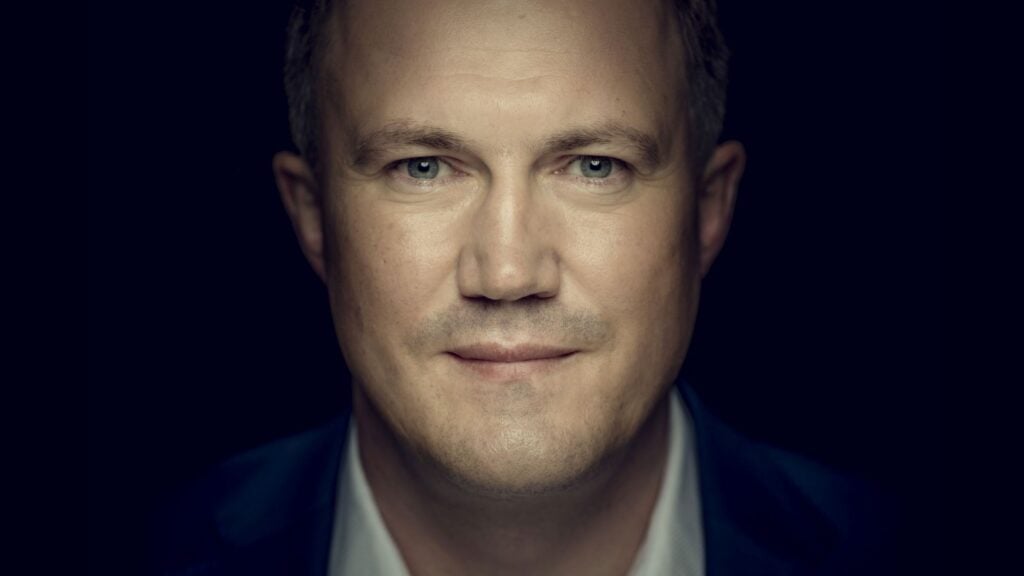
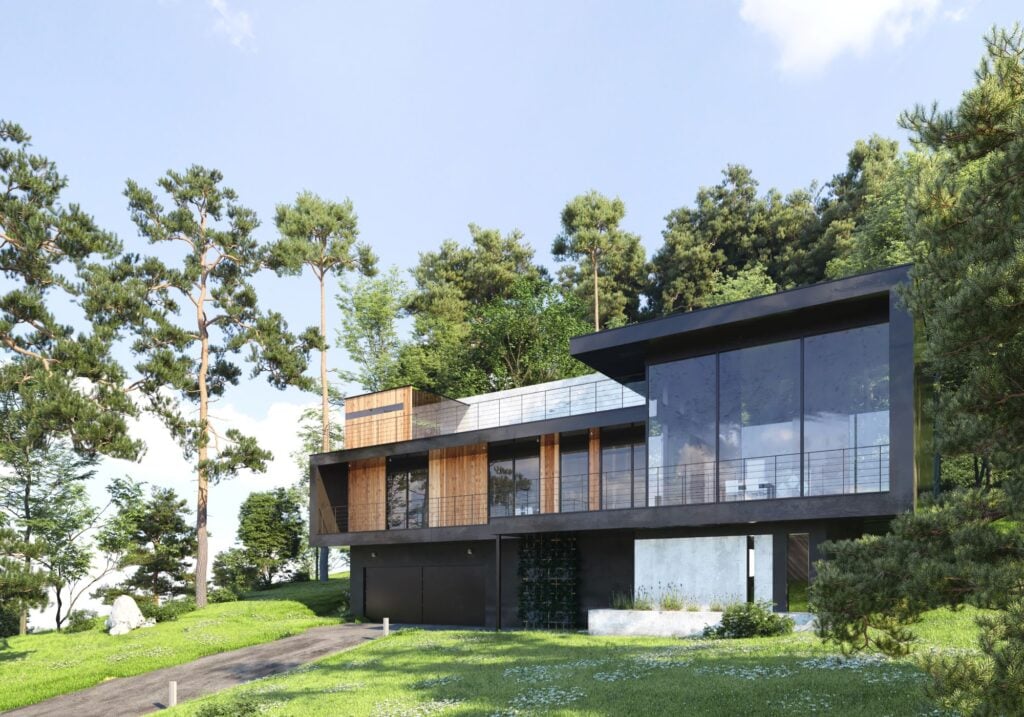
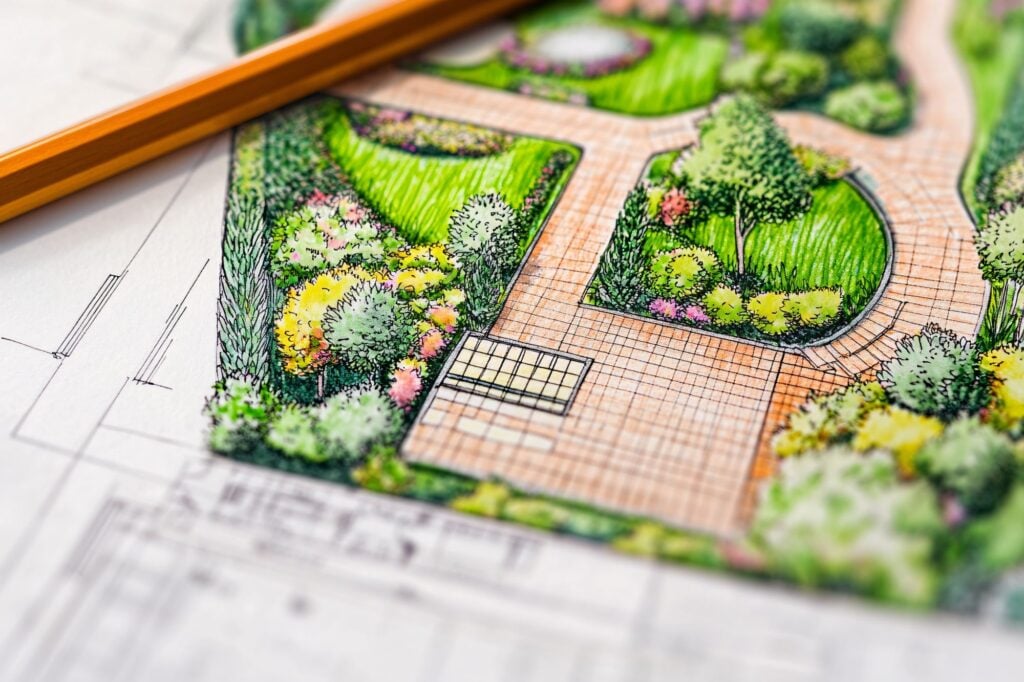
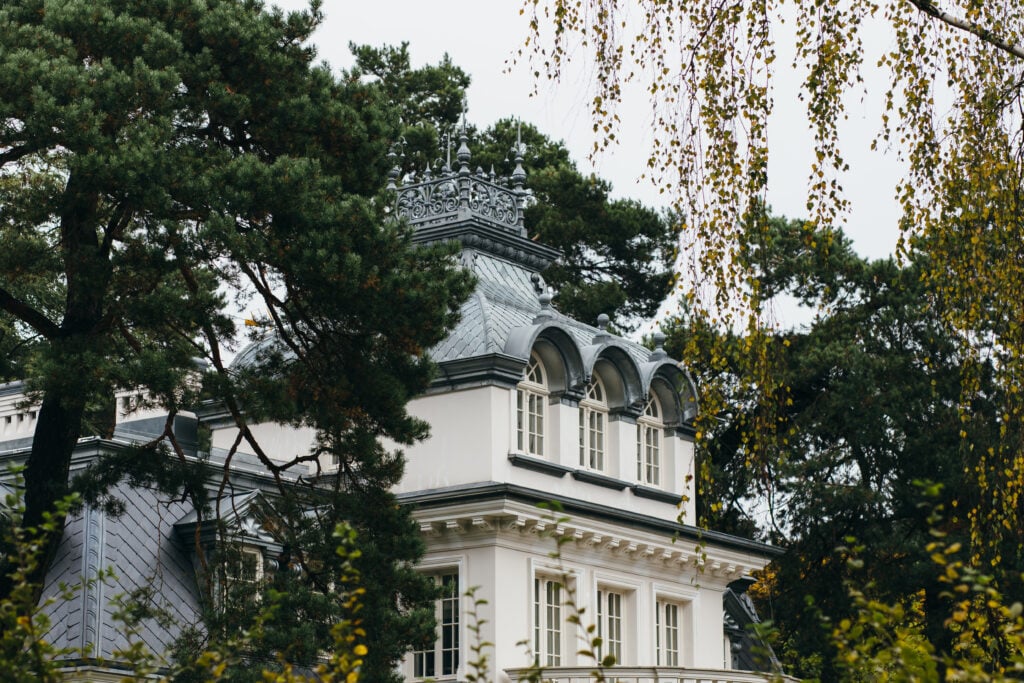
![[ENG] Life in Warsaw. 10 places you must visit in the city](https://livingredefined.pl/wp-content/uploads/2025/05/stare-miasto-warszawa-1024x630.jpg)
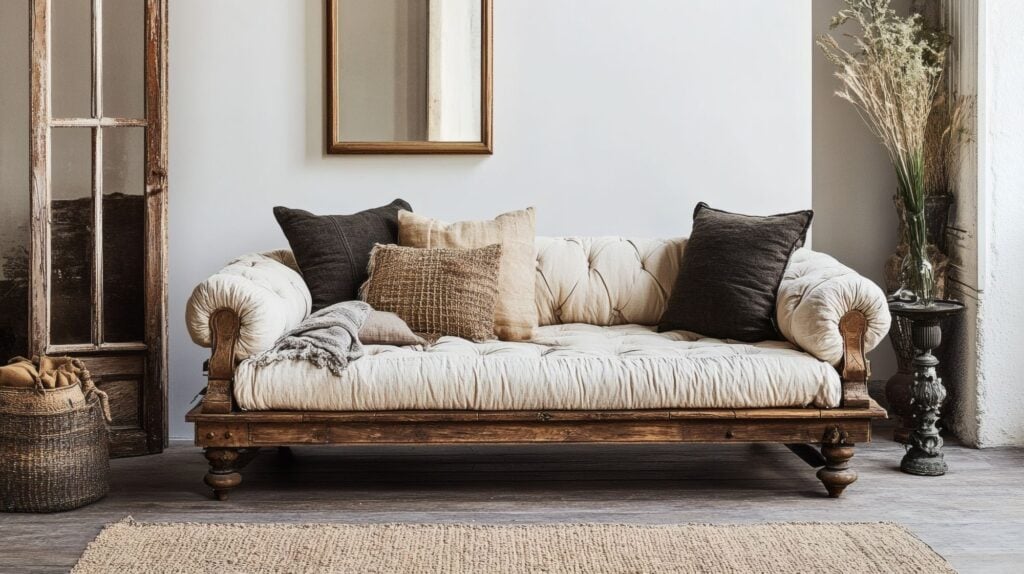
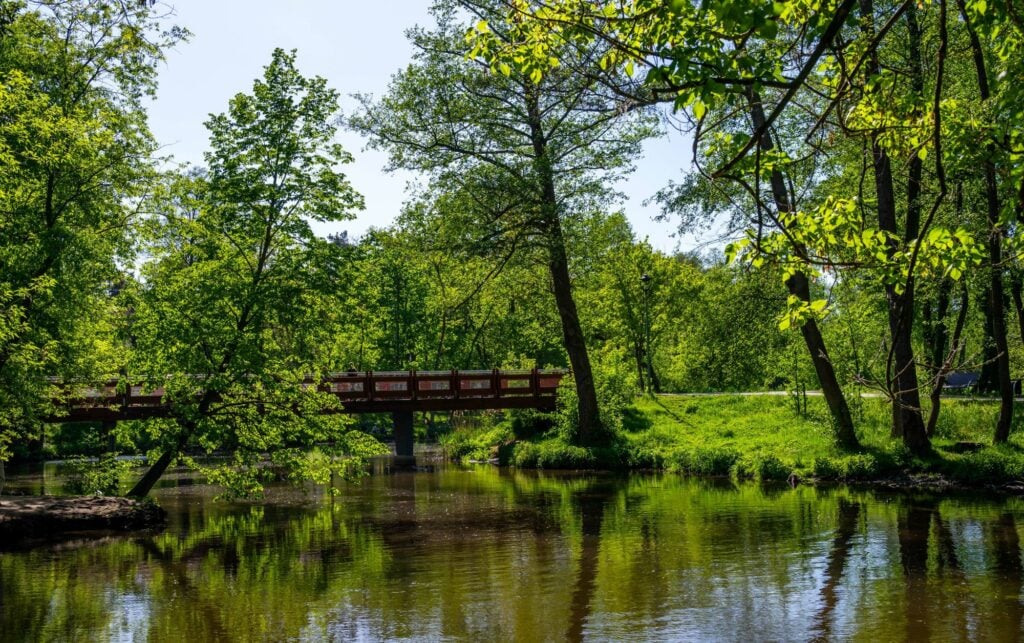
![[ENG] Safe and Sound. Experience the Modern Urban Living in the Capital City of Warsaw](https://livingredefined.pl/wp-content/uploads/2025/04/warsaw-city-panormaic-view-1024x409.jpg)

